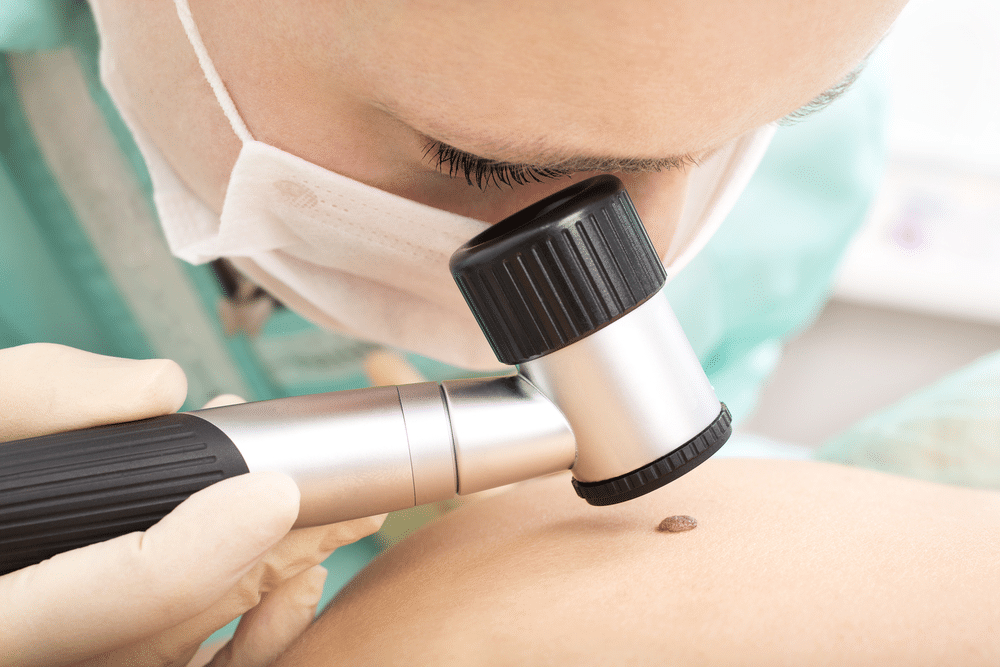Occasionally, you may have a mole, beauty mark, or pigmented lesion on the face you may want to remove. While there are many methods to reduce the appearance of pigmented lesions, if you want to fully remove an unwanted mole or blemish, then a mole removal treatment at New England Cosmetic Surgery and Laser Center in Weymouth, MA may be a good option. But how effective is this treatment?
How Effective Is Mole Removal?
In general, mole removal treatments are very effective for removing unwanted moles and pigmented lesions from the skin. This treatment will remove all layers of skin cells that are affected by the mole or darker skin pigment. Once the mole is removed, it will not be able to grow back in the future, so the treatment is considered highly effective.
How Does This Treatment Work?
Treatments to remove unwanted moles are performed in the office and can be completed in as little as thirty minutes. This treatment works by making an incision to slice away the mole, using a skin-punch technique, or other methods. During your treatment, a topical numbing cream will be used to maintain your comfort during the treatment. Most people don’t feel any sensations associated with the treatment.
Will You Need To Prepare?
You will not need to make any changes in your skincare routine before your treatment. On the day of your treatment, you should arrive at your appointment without any make-up on the treatment area. You should also not wax, use chemical peels, or other irritating skin treatments in the week before your appointment. Depending on the location, you may want to shave the treatment area about 24 hours before your treatment to make changing bandages more comfortable.
What Is Aftercare Like?
The recovery process will usually take about one to two weeks, depending on the location of the mole. Some people may return to work after their treatment, while others may prefer to take one to two days off. You will be able to continue your regular routine, including exercise. However, during the first 24 hours, you should keep the incision area dry, so you may not be allowed to shower, wash your face, or participate in water activities.
Taking Care of Stitches
The biggest portion of your aftercare process will be taking care of your stitches. Your wound dressings should be changed at least once a day to monitor the incision for any signs of infection. Using an anti-bacterial spray to cleanse the incision can help keep the wound clean. To keep the wound moisturized and to avoid any itching from the stitches, applying Vaseline over your incisions before replacing the bandage is a good idea. Moist wounds also heal faster than dry wounds, so keeping your incision covered is essential.
Your Follow-Up Appointment
You will usually have a follow-up appointment about one week after your treatment. This follow-up appointment will remove the stitches and check on the progress of your healing. After your follow-up appointment, you can resume your normal skincare routine, although it may be a good idea to avoid chemical exfoliants and retinoids for another week or so. You will not need to cover the incision unless you want to.
Will There Be a Scar?
There should not be any significant scarring after this treatment. The incision or skin punch technique used to remove your mole will be placed in a way that will camouflage any visible scarring, particularly if the mole is on the face. Ideally, incisions are made in the natural folds of the skin to minimize any scars after your treatment.
Of course, the best way to minimize a scar is to take good care of your incision site after your stitches are removed. Certain skincare products are designed to keep the skin smooth and evenly toned after your treatment. Some products can include silicone-based creams or gels, oils like Bio-Oil, or scar recovery cream from medical-grade skincare brands.
Sun Protection
Protecting your skin from the sun can also be a good way to prevent or minimize scarring after your treatment. Sunlight can trigger melanin production in the skin that is newly healed, which can darken the pigment of the scar and make it more noticeable. Wearing SPF 30 or higher when you are outside can protect against skin darkening.
Why Do People Remove Moles?
In general, there are two main reasons to remove moles – for medical purposes and cosmetic purposes. People who remove cosmetic reasons typically don’t like the appearance of a mole on the face. Removing a mole for medical purposes is generally because the mole has a suspicious appearance or may be a precancerous lesion, which is identified by a dermatologist.
When Will You Get Results?
If a mole is removed because it is a suspected precancerous lesion, then the lab results from the mole removal will usually be available about one week after the treatment. Once your results are known, you and your dermatologist will work together to develop a treatment plan going forward if necessary.
Get Rid of Unwanted Moles
Whether you are removing a mole for medical or cosmetic reasons, treatments for mole removal are all equally effective. Moles that are removed from the skin will not come back. Contact us at New England Cosmetic Surgery and Laser Center in Weymouth, MA to schedule your consultation today.
